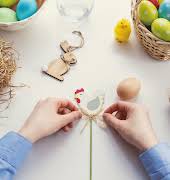
IMAGE Book Club: Read an extract from ‘The Homekeeper’s Diary 2023’ by Francis Brennans
By Francis Brennan
19th Sep 2022
19th Sep 2022
This week’s IMAGE Book Club title of choice is The Homekeeper’s Diary 2023 by Francis Brennan.
A book crafted specifically to ensure domestic bliss in 2023, the newly released The Homekeeper’s Year by Francis Brennan provides space to organise your days, weeks and months, while inspiring you to transform your home with advice on cleaning, gardening, cookery, and all other aspects of household management.
Packed full of simple ideas and tasks that will make your day better and brighter, below we’ve got an extract on all things foraging, and it will give you a nice little taster of the conversational tone and practical tips this book is filled with.
Please enjoy an extract on ‘food on your doorstep’ by Francis Brennan.

Have you ever tried foraging? You’ll probably have done so without even realising. Picking blackberries, field mushrooms, rosehips, even seaweed – all of this is foraging. It might surprise you to know that Ireland is rich in plants and berries that are safe to eat and taste delicious. And you’ll be all the more satisfied because you picked it yourself! But before you get carried away and run outside, always, always check that what you pick is edible. A little bit of research will take you to any number of experts who can guide you. There’s a very useful website called www.eattheweeds.com, which explains how to spot and handle many wild edible plants.
So, what can you forage to eat?
Dandelion leaves
I had a friend who was forever picking up big clumps of dandelion leaves in summer. I thought she must have a great passion for them, until she revealed that they were for her pet rabbits! However, dandelion leaves are edible and easy to spot, with that bright yellow flower. A little nibble will reveal that they taste a bit like rocket. If their flavour is too strong for you, mix them in with milder lettuce varieties. Don’t forget to wash them first! Dogs do like ‘using’ dandelions …
Curly dock leaves
We used to use these as children to relieve nettle stings. A leaf applied to the spot reduced the itching instantly. They are actually very nice in a salad; they have a slight lemony flavour. They’re a bit like kale in that they need to be ‘massaged’ – with a squeeze of lemon juice – to soften the texture. If you mix them with something like wild mint, they’ll be delicious. And speaking of wild mint, you’ll know it simply by the taste, which is similar to the domestic variety. And you’ll be able to smell it, too! The leaves are narrow and pointed and the flowers are purple.
Nettles
I used to meet a man on my walks who would wander along the hedgerows, a plastic bag in hand, snipping the tops off all the nettle plants. When I asked him what he was doing, he replied that he was pinching off the tenderest part of the plant to make nettle soup. Without gloves! He was an expert, but I’d always recommend wearing gloves, because nettles do sting. Once exposed to hot water, their sting is neutralised, so they make a great addition to soup, in place of spinach, for example. Use tongs to pop them into the stock so that you don’t get stung.
Wood sorrel
I can clearly remember eating this as a child and really enjoying that sharp-sour taste. We’d find it on summer walks in the woods and would nibble away on it. It looks very like clover, but the leaves are a bit looser and more rounded than that plant. You could try using it in a pesto, to make the most of that flavour – just replace some or all of the basil leaves with sorrel, blending it with olive oil, pine nuts and parmesan or pecorino cheese. Wild garlic is another easy-to-find plant that really does smell of garlic.
Bilberries
Another great favourite of ours as children were these blueberry-like berries that grow on little, low bushes in the Dublin mountains. Irish people often call them fraughans or fraocháns and they used to grow everywhere, before pine forests took over. I read somewhere that Ireland used to have a very lucrative export business in the fruit, so many did we have. They are harder to find these days, but they are still there in little patches. They look very like blueberries, but they are tarter and more perfumed in flavour. Try using them in place of blueberries, although you might need to add sugar to taste.























